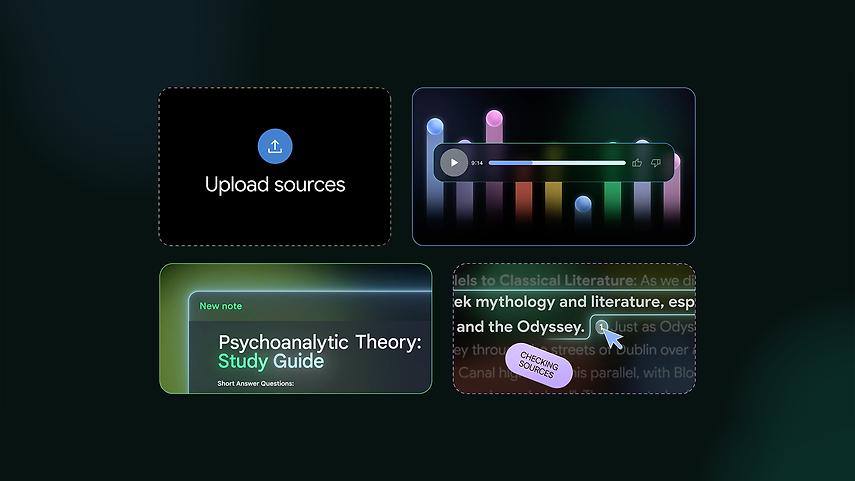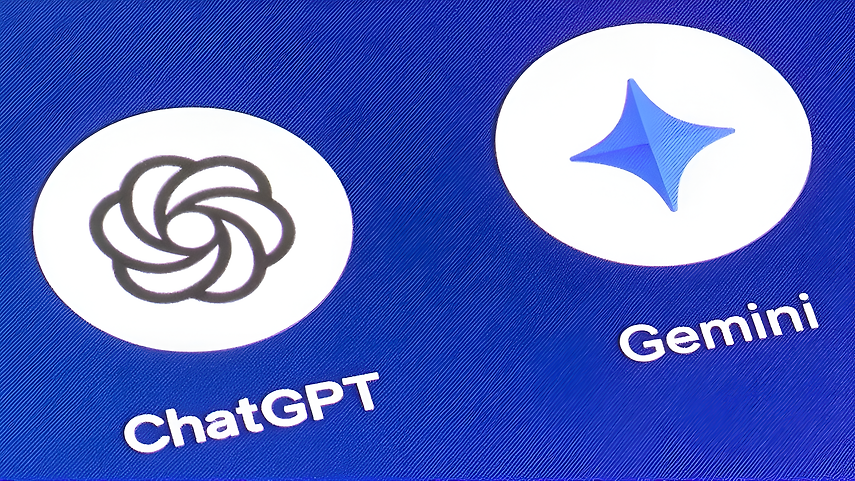The Human Storyteller Meets the AI Assistant
Artificial Intelligence is transforming how local experts, museums, and destination teams create and share stories. According to a recent industry survey, 90 percent of tourism and hospitality leaders are already using or plan to use AI to stay competitive.
The goal isn’t to replace the human storyteller, but to give them sharper tools, faster workflows, and broader audiences. AI has become the ultimate assistant: one that supports research, rough drafts, and technical production, so creators can focus on the craft and the magic.
This guide shows how to leverage AI tools alongside the STQRY builder to launch high-quality, accessible, and engaging digital tours faster than ever.
-0-856-0-0.png?k=21d6c51c65)
How AI Accelerates Every Step of Tour Creation
Building a self-guided tour involves several distinct creative and logistical stages. We spoke with Dan Forbush, founder of Smartacus, and his colleague Dominic Giordano, who have been pioneering this process for cultural institutions in upstate New York. Their work with Warren County and the Hadley–Lake Luzerne Historical Society offers a model for how AI and STQRY combine to turn deep local research into interactive visitor experiences.

Stage 1: Research and Context (NotebookLM)
A challenging part of historical storytelling is condensing vast, sometimes conflicting information into a single accurate narrative. Traditional large language models can introduce errors, but NotebookLM by Google draws only from the sources you upload.
How it works:
- Gather local archives, books, and verified sources. Interview local experts and record conversations. Tools like Otter.ai can transcribe them automatically.
- Upload your materials to NotebookLM, which creates a closed, fact-based knowledge base that keeps your research accurate.
- Prompt it to generate a briefing document summarizing key insights and quotes to inform your script writing.
“NotebookLM was the most important tool,” says Giordano. “It let us synthesize fifty different documents without polluting the narrative with outside information.”
The result: cleaner research, fewer factual errors, and hours saved in manual note-taking.

Stage 2: Writing and Refinement (ChatGPT / Gemini)
Once the research is organized, tools like ChatGPT or Google Gemini help draft scripts, experiment with tone, and condense material. Whether used for editing or building narrative structure, they save significant time without sacrificing quality.
The process:
- Paste your NotebookLM briefing into ChatGPT.
- Set creative direction through prompts such as: “You are a witty, engaging 19th-century tour guide. Using the historical context provided below, draft a 300-word script for a walking-tour stop in a dramatic first-person voice. Inject emotional weight into the description of the figure’s struggle.”
- Ask the AI to critique or rewrite for clarity, pacing, or reading level. Prompts like “Now rewrite that for a 5th-grade reading level” or “Drop “not only...but also” constructions that sound formulaic. Rewrite for natural rhythm and variety” help you fine-tune tone quickly and avoid overused structures.
Then, refine. The AI provides the speed and scaffolding; your expertise ensures the narrative has heart and authentic local nuance.
-0-408-0-0.png?k=a1ca7ba261)
Stage 3: Voice and Sound (ElevenLabs)
With scripts approved, the next step is voice. ElevenLabs produces expressive, natural-sounding narration.
Choose lifelike voices to match each character’s era and personality, generate your audio files, and upload them to STQRY. For historical reenactments, you can select voices that fit the character, such as a distinguished 17th-century gentleman to a mid-19th-century Civil War figure.
ElevenLabs can clone voices, match accents, and adjust pacing and emotion for realistic delivery. It supports 20+ languages and a studio editor supporting captions, collaboration, and video editing – combining every tool you need to edit, produce, and share at scale.
-0-408-0-0.png?k=7e31332d8e)
Smartacus in Action
Smartacus is a creative communications studio founded by Dan Forbush, an award-winning journalist and educator once named among PRWeek’s 100 Most Influential PR Practitioners of the 20th Century.
Their project, Explore Warren County, built on STQRY, invites visitors to discover audio narratives about Warren County’s historic places either by car or on foot.
Forbush and Giordano then extended that approach for the Hadley–Lake Luzerne Historical Society, transforming an annual live lantern tour into a permanent, year-round digital experience.
The model is simple: combine AI-assisted research and writing with STQRY’s builder to produce immersive, inspiring tours that any community can replicate.
- The Content Scale:
Dan and his team generated 34 separate narratives (17 first-person audio scripts and 17 third-person text scripts), all based on materials compiled into NotebookLM. This dual format ensures accessibility for both audio and text audiences.
- The Production Win:
By following this three-stage process, the tour was described as significantly better than the previous year’s human-only version. AI accelerated generation and refinement.
-0-408-0-0.png?k=099949e3c3)
- Community Validation:
Sue Wilder, Director of the Hadley-Lake Luzerne Historical Society and Hadley Business Association who first conceived the original lantern tour, and Sara Frankenfeld, Warren County GIS Administrator, were integral to the editing process. Their feedback confirmed the system works: AI provides the engine, human experts provide the direction.
- The Deliverable:
The final content, complete with ElevenLabs-generated “historic voices,” was geo-tagged, mapped, and published via STQRY, ready for visitors to explore.
Together, these projects demonstrate how a small creative team, armed with AI and STQRY’s builder, can create a growing ecosystem of mobile experiences that preserve local stories while engaging modern travelers in entirely new ways.
This is just the beginning. The Smartacus team is seeking partners with whom to develop Voices of Saratoga, a STQRY-powered app that would bring the voices and hidden histories of Saratoga County to life through AI-enhanced storytelling.
-0-856-0-0.png?k=9d83f8c521)
Why STQRY Is the Perfect Builder for AI-Enhanced Tours
Once your content is created, STQRY makes delivery effortless. The Builder transforms your AI-assisted scripts, audio, and media into a polished, branded digital experience.
- No-Code Publishing: Upload text, images, audio, video, and maps directly into an intuitive web builder. Drag, drop, preview, and publish for mobile web, iOS, and Android in minutes.
- Multilingual Reach: Instantly translate your vetted scripts into 55+ languages with built-in AI translation and text-to-speech.
- Interactive Features: Use geofenced alerts, scavenger hunts, badges or trophies, quizzes, and 360° content to encourage participation and keep visitors exploring longer.
- Analytics & Optimization: Track which stops attract the most engagement and refine routes or content accordingly.
Together, these capabilities turn your AI-generated assets into interactive, living experiences that work online or offline.
Additional AI Tools for Creators
- Midjourney / DALL-E 3 – Generate historically inspired images or illustrations for stops and thumbnails.
- Runway ML or Pika Labs – Generate short cinematic clips or looping videos to embed within STQRY stops.
- Sora – Generate cinematic, lifelike videos from text prompts to enhance storytelling and atmosphere.
-0-856-0-0.png?k=7c8f99e045)
Your Launch Blueprint: 7 Steps to an AI-Enhanced Tour
- Identify your story, audience, and goals. Define what travelers should learn or feel.
- Map your route and points of interest. Build a logical journey that fits your theme.
- Aggregate research with NotebookLM. Create a concise, fact-checked knowledge base.
- Draft and refine scripts in ChatGPT. Shape your narrative and set the tone.
- Generate voices with ElevenLabs. Produce lifelike narration across languages.
- Enhance with creative AI tools. Add visuals, clips, or quizzes for interactivity.
- Deliver through STQRY Builder. Upload content, set geofences, publish, and track engagement.
AI accelerates the process. Your expertise ensures the story endures.
FAQs
Which AI tools work best for tour creation?
NotebookLM for research synthesis, ChatGPT or Gemini for writing, and ElevenLabs for audio form an efficient core.
How can I ensure historical accuracy?
Base your prompts only on verified materials uploaded to NotebookLM, proofread and fact-check with subject-matter experts before publishing.
Do I need technical skills to use STQRY?
No coding required. If you can upload files and organize folders, you can publish a professional-quality app.
The Future of Storytelling Is Collaborative
AI and human creativity are working together to reshape cultural tourism. Platforms like STQRY make it simple for any operator, destination, or historical society to transform powerful stories into living digital experiences.
Book a free demo and see how STQRY can help you launch your AI-powered tour in 2026.